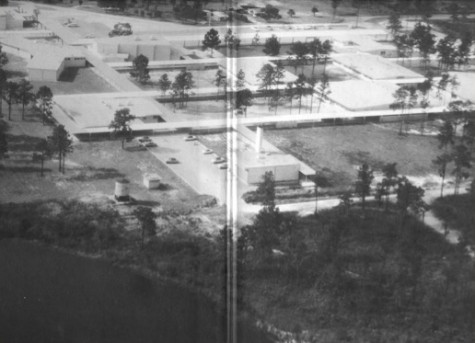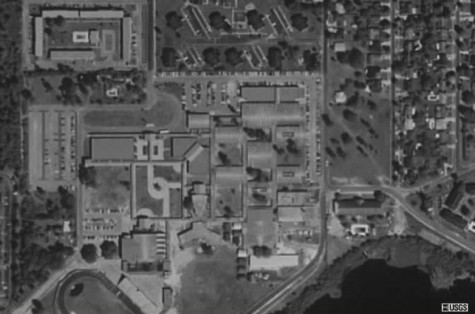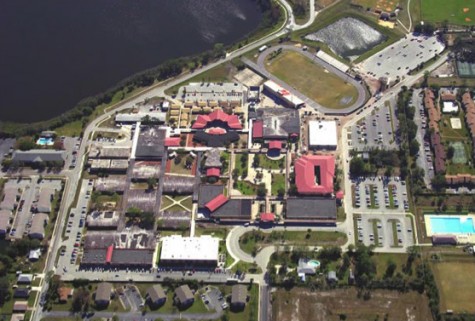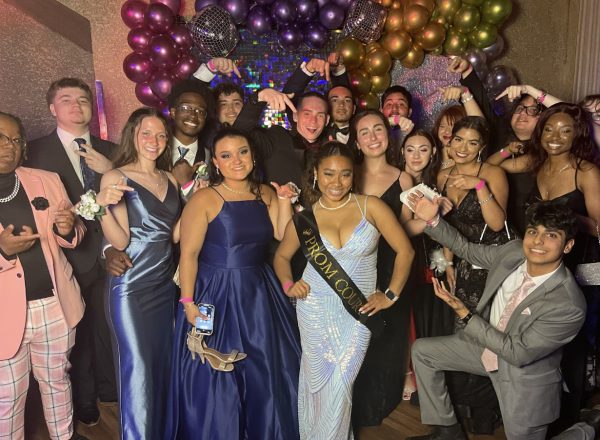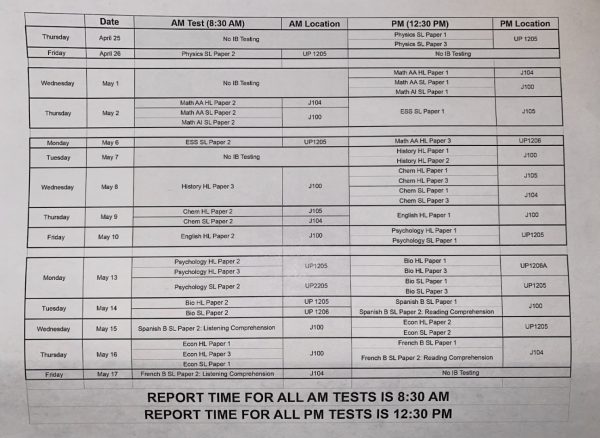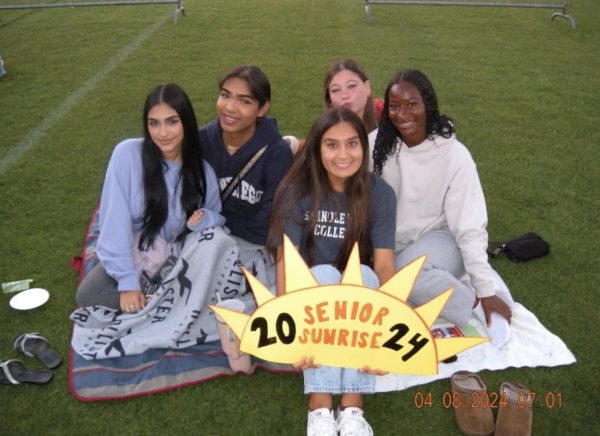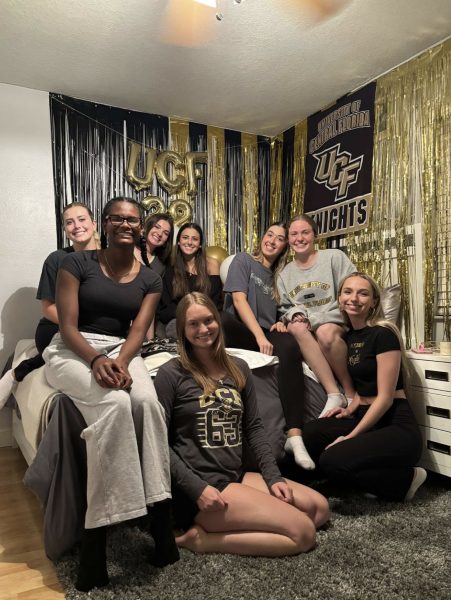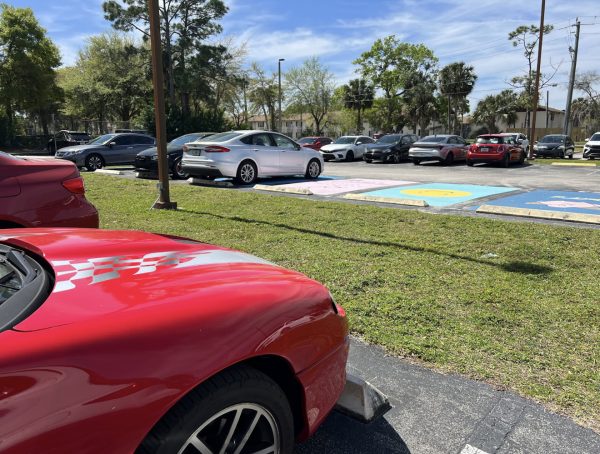SEMINOLE REMINISCES ON PAST AS 2016’s SENIORS LEAVE

Seminole High school has changed immensely over the years.
May 2, 2016
In 1907, four ladies in long white dresses graduated as the first seniors of Sanford High, from a newly-built brick school now known as the Student Museum. Today, more than a hundred years later, the class of 2016’s graduation is coming up and a lot has changed. From location to population, technology to dress code and discipline to traditions, Seminole is able to revisit the stories of its years.
Location and campus changes:
When Sanford High school was founded in 1902, it was located where the Student Museum is today. In 1911, it moved locations to a reside near Sanford Avenue. It wasn’t until Christmas break in 1926 that the school moved to where Sanford Middle now stands. In that same year, the name was changed to Seminole High School. The school remained in that location until 1961, when they moved to the current address. Since then, there have been several building projects and remodeling works, so much so that the school campus in 1961 would be unrecognizable today. The last major building project was around 2005; in that remodeling, every outdated building was torn down and rebuilt to create the two-story buildings that can be seen now. All that remains of the previous property is the old gym, a part of the kitchen in the cafeteria, and the school’s old boiler plant by automotive.
Population and diversity:
In the first years at Seminole High School, the population consisted of only four white girls. Until desegregation, Seminole High was the designated all-white school and Crooms was the historically black school in the Sanford area. The population remained relatively small up until the end of desegregation. High school back then also only taught grades 10-12. When Seminole County was desegregated in 1969, Crooms’ students came to Seminole, which was a huge increase in the student enrollment.
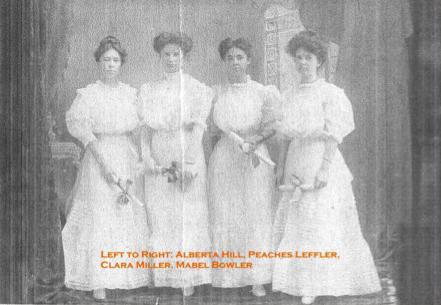
“Crooms opened up as a 9th grade center for the overflow of students because we then had too many students here at SHS,” says Mr. Charlie Schomer, Seminole High School’s media specialist. “This school was only built to hold 1200 students. And I think they were pretty much at capacity in the ‘60s at the school.”
Building projects were largely made in order to accommodate the growing student population. And later, when high schools began including 9th grade, the population greatly increased again.
Ms. Jane Cooper has been teaching at Seminole since 1973 and was a student in the ‘60s.
“For most of my career, the faculty was fewer than a hundred. Now the faculty is an excess of 200,” she exclaims. “I remember many years when the student body was around 12 to 15 hundred. And now the student body is above 3,000. So the school’s doubled or tripled in size.”
Seminole’s diversity has increased immensely, due to the addition of the Health Academy and I.B. programs in the 1990s. They were brought to the school as part of the magnet programs; they offer many opportunities for different types of students, and draw people to SHS from all over the county. Bringing these programs to the school also provided funding and educational improvements for those already zoned and studying under the standard curriculum as well.
“There is something for everyone and a path for every interest and ability,” says Ms. Lynn Cullum, who was a student at SHS in the ‘70s before working there for 30 years. “The racial makeup of the school is amazing. In the ‘70s, it was black and white. Now it’s Hispanic, Asian, European, African, etc.”
Dress Code:
Throughout the years, the dress code at Seminole High School has changed incredibly. In the early years up until the ‘60s, all female students and teachers were required to wear dresses. Students and teachers would have to sit in sweaty, muggy classrooms in their long dresses and suits. There was no air conditioning and no one was allowed to wear shorts during this time. There have never been school uniforms at SHS, but they did used to have gym uniforms.
“In a lot of schools, [the girls] had to wear gym uniforms where it was probably the ugliest thing you’d ever [seen]”, decribes Schomer. “They were very unflattering.”
The boys had it a little better, as the gym uniform for them was usually simply a specific color shorts and a t-shirt.
The school’s dress code changes throughout time with the changing fashion. Students throughout the early years and up until the ‘60s and ‘70s dressed for school in clothes that they could have easily worn to a church or to a nice restaurant, describes Schomer. It was in the mid ‘70s that they started relaxing the school’s dress code and students could wear jeans to school. But back then, wearing jeans still wasn’t presentable. It either signified that that student worked on a farm or that they were a troublemaker.
Despite many changes in dress code, some aspects have remained the same for decades now.
“My senior year of high school, girls were being sent to the office for their skirts being too short. And they still are,” says Cooper. “They’re just shorter.”
Traditions:
Seminole High School students today still sing the same alma mater as they did in the ’20s. The school mascot of the Osceola Indian has also remained the same. Many traditions, however, have been lost throughout the years.
During the time when Sanford was considered the celery capital of the world, all of Seminole High School’s sports teams and the students were nicknamed as the “celery-feds”. This tradition lasted for decades until the celery farming moved south and the name grew irrelevant.
Some past senior traditions that SHS has enjoyed include homecoming floats, senior hats, and seniors decorating their parking spaces.
“After I graduated, the seniors could paint their parking spaces. So everybody had his own space and he decorated it any way he wanted to,” recalls Cooper. “They could paint it and put like, University of Florida on it if they wanted to, or put their name on it. They could put a picture of their cat. It didn’t matter. They got to paint the asphalt [and] paint the curb.”
Technology:
Computers, printers, and overhead projectors are all the norm today. But they are still relatively new. Technology has changed immensely throughout Seminole’s history. The Media Center has only been what it is for about a decade, and there was a time when the entire English department was fighting to get a single typewriter to share.
“There was a time in my career when for several years the English department, which was one of the largest departments in the school, requested every year to have a typewriter to share. And they were turned down,” says Cooper. “They said there wasn’t enough money to have a typewriter. All of us wanted to have one typewriter- not a computer, mind you, but a typewriter- to use and they turned us down.”
Discipline:
For many years up until the ’90s, corporal punishment, such as paddling, was a common practice in schools. If students misbehaved, they would be sent to the dean’s office and they could choose to either have the paddle or to have their parents called.
“Paddling was commonplace, and students many times were given a choice of licks with a paddle or detentions/suspensions,” says Cullum. “I don’t believe parents were routinely called concerning the paddling, so most students took the licks rather than have their parents find out about a detention or suspension. Students knew they would be in trouble at home if they got into trouble at school.”
As the graduating class of 2016 walks across the stage, Seminole can reflect back on all of the history that led to that night.
“Why do I think it’s important to reflect on our school’s history? From a student’s standpoint, it lets a student know that they are part of something bigger than who they are. I mean, most students come in the high school as freshman, scared to death. As they move through the grades, they become more confident, and when they’re seniors, they think they’re the big cheese in the school. But a freshman should also know that they’re part of an institution that, as in this case, this school, has been around for over a hundred years. That they are part of something that’s been around a long time and has a lot of history,” says Schomer. “I think you become part of a community when you have a feel and understanding of what the community has gone through to get where it is today. And I think probably in this world, with all the moving that people go through, there’s a lot of people that live in places but never feel like they’re part of that community.”
